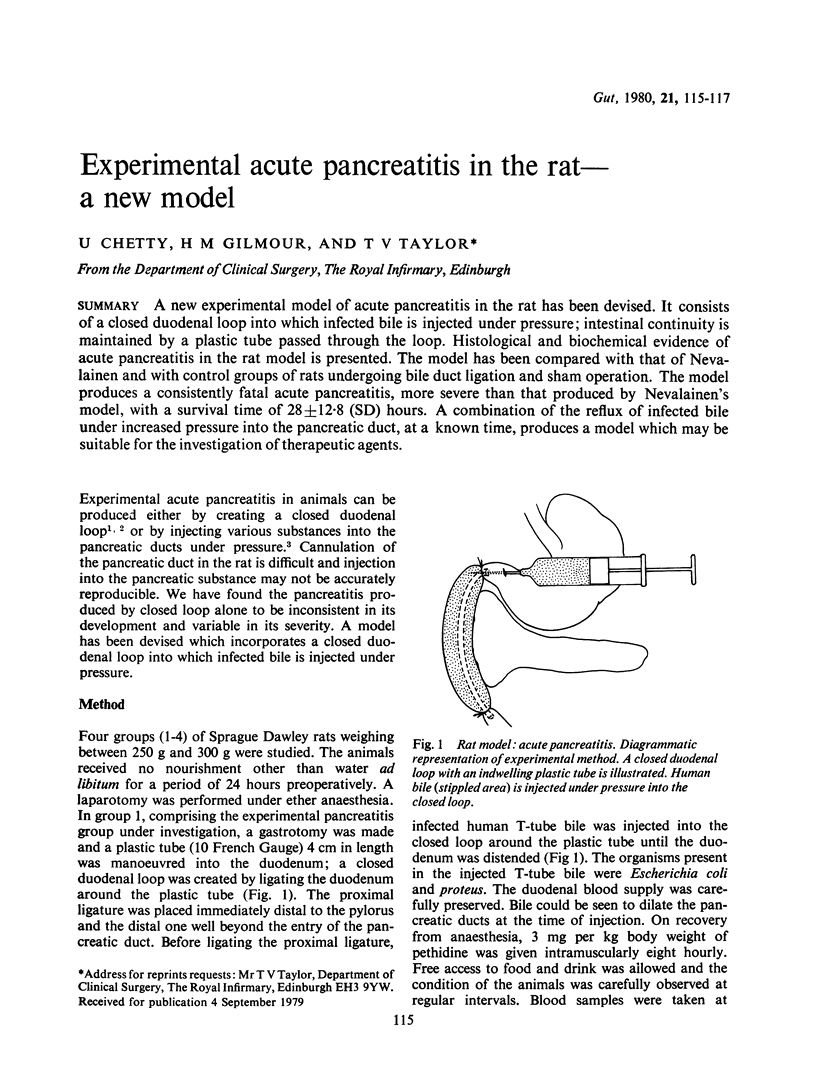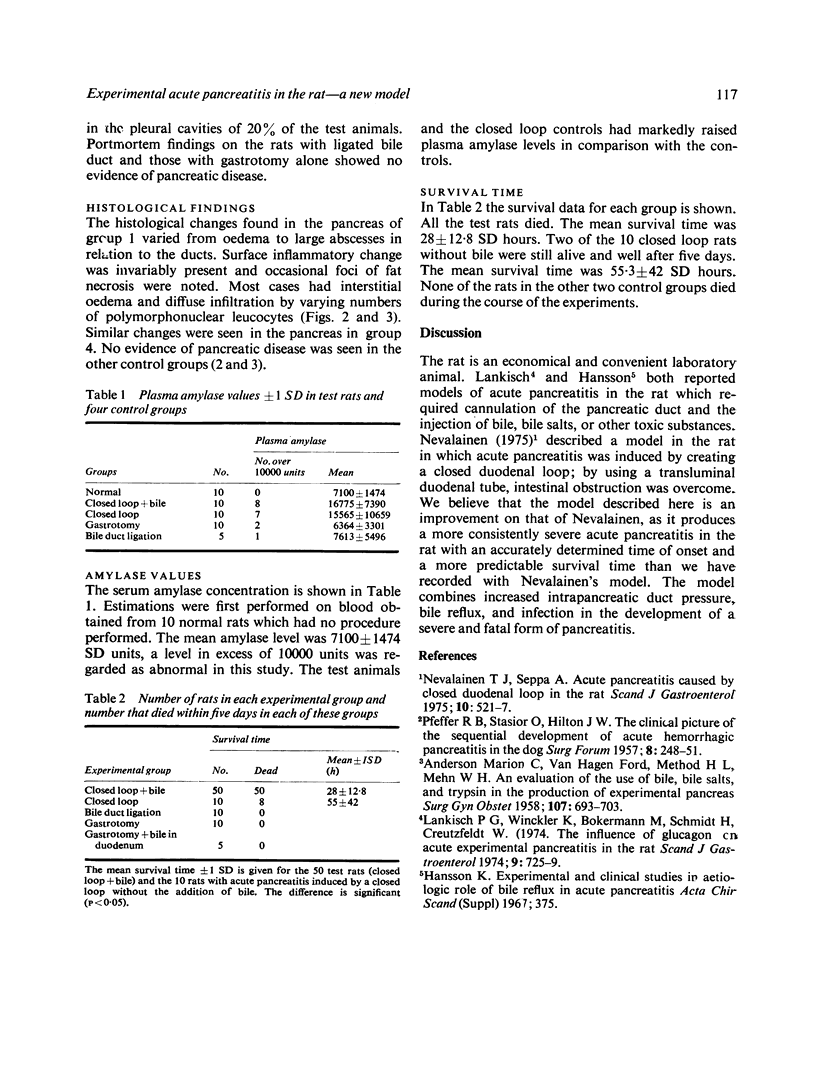Abstract
A new experimental model of acute pancreatitis in the rat has been devised. It consists of a closed duodenal loop into which infected bile is injected under pressure; intestinal continuity is maintained by a plastic tube passed through the loop. Histological and biochemical evidence of acute pancreatitis in the rat model is presented. The model has been compared with that of Nevalainen and with control groups of rats undergoing bile duct ligation and sham operation. The model produces a consistently fatal acute pancreatitis, more severe than that produced by Nevalainen's model, with a survival time fo 28+/-12.8 (SD) hours. A combination of the reflux of infected bile under increased pressure into the pancreatic duct, at a known time, produces a model which may be suitable for the investigation of therapeutic agents.
Full text
PDF


Images in this article
Selected References
These references are in PubMed. This may not be the complete list of references from this article.
- ANDERSON M. C., VAN HAGEN F., METHOD H. L., MEHN W. H. An evaluation of the use of bile, bile salts, and trypsin in the production of experimental pancreatitis. Surg Gynecol Obstet. 1958 Dec;107(6):693–703. [PubMed] [Google Scholar]
- Lankisch P. G., Winckler K., Bokermann M., Schmidt H., Creutzfeldt W. The influence of glucagon on acute experimental pancreatitis in the rat. Scand J Gastroenterol. 1974 Nov;9(8):725–729. [PubMed] [Google Scholar]
- Nevalainen T. J., Seppä A. Acute pancreatitis caused by closed duodenal loop in the rat. Scand J Gastroenterol. 1975;10(5):521–527. [PubMed] [Google Scholar]
- PFEFFER R. B., STASIOR O., HINTON J. W. The clinical picture of the sequential development of acute hemorrhagic pancreatitis in the dog. Surg Forum. 1957;8:248–251. [PubMed] [Google Scholar]




